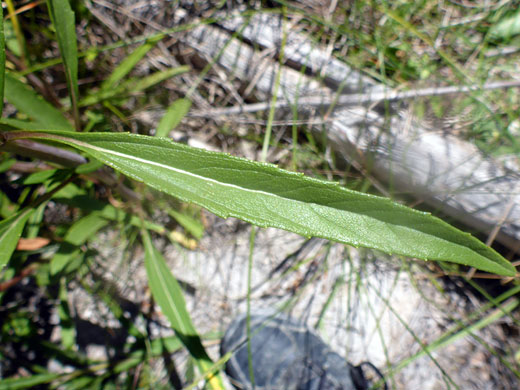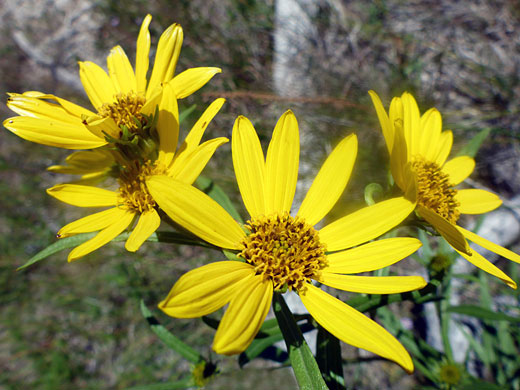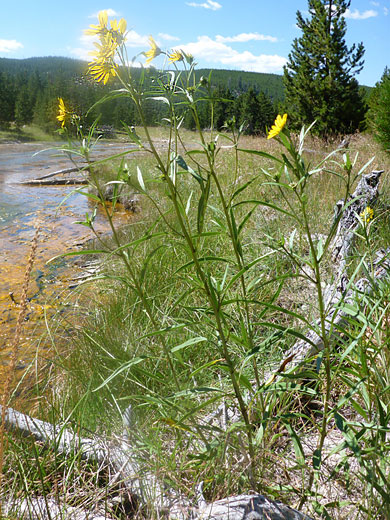
Florets and phyllaries of helianthus nuttallii ssp nuttallii, Rabbit Creek, Yellowstone National Park, Wyoming
Common name:
Nuttall's sunflower
Family:
Scientific name:
Helianthus nuttallii
Main flower color:
Range:
All the western states except Texas
Height:
Up to 13 feet
Habitat:
Streambanks, roadsides, moist grassland, open areas; up to 9,000 feet
Leaves:
Narrowly ovate to lanceolate, up to 7 inches long and 1.5 inches across, often with toothed margins
Season:
July to September
Helianthus nuttallii is a tall species, sometimes up to 13 feet, generally growing in moist locations. Leaves are long and narrow, positioned all along the stem, with either an opposite or alternate arrangement. Leaf edges may be entire or lined with fine, well-separated teeth. Leaves have a prominent center vein, whitish towards the base, and a pair of fainter side veins, starting at the base and extending around half the length. Leaves are attached by stalks up to half an inch long. Leaf surfaces are dotted with tiny glands, and may have a covering of short hairs. Stems are green or yellowish brown, and generally hairless.
Stems are topped by between one and six flowerheads; these have between 10 and 21 yellow, grooved ray florets, up to one inch long, around a center of 60 or more yellow to orange disc florets. Phyllaries are dark green, and spreading, with ciliate margins and lightly hairy faces.
Two subspecies are the widespread ssp nuttallii, which has narrow leaves, mostly alternate, and the less common ssp rydbergii of the northern Great Plains, for which the leaves are opposite, wider, and more ovate in shape.
Stems are topped by between one and six flowerheads; these have between 10 and 21 yellow, grooved ray florets, up to one inch long, around a center of 60 or more yellow to orange disc florets. Phyllaries are dark green, and spreading, with ciliate margins and lightly hairy faces.
Two subspecies are the widespread ssp nuttallii, which has narrow leaves, mostly alternate, and the less common ssp rydbergii of the northern Great Plains, for which the leaves are opposite, wider, and more ovate in shape.
All Contents © Copyright The American Southwest | Comments and Questions | Contribute | Site Map



